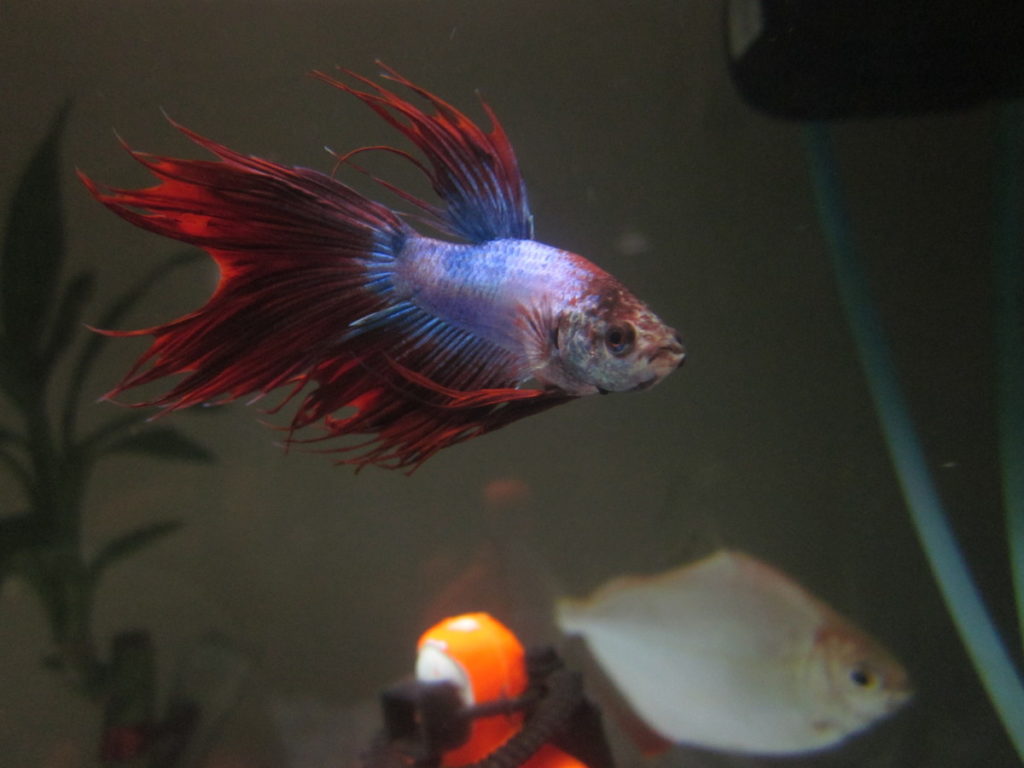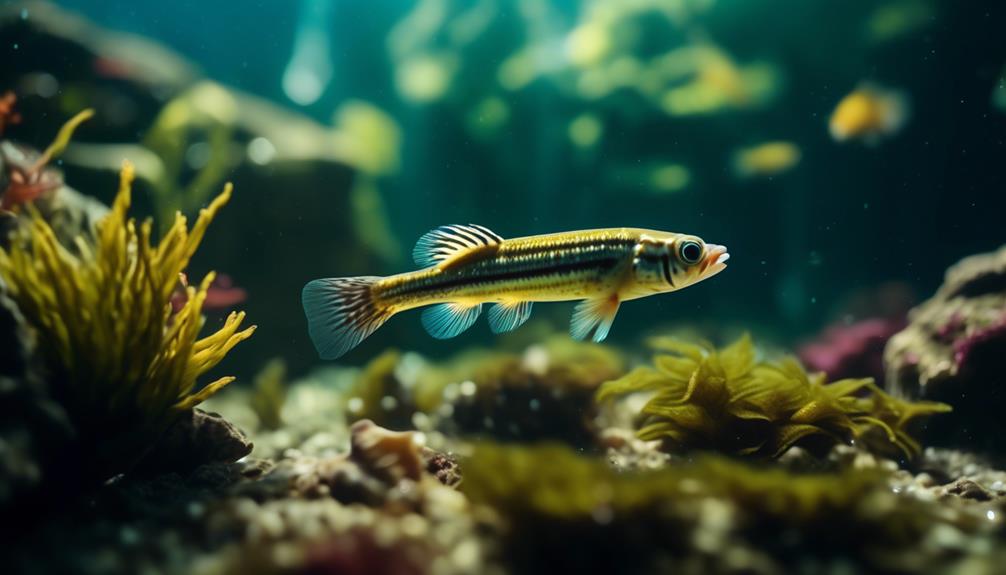
As you gaze into the depths of your aquarium, imagine a world teeming with life, where vibrant colors dance among unique habitats. Picture a tiny fish, no bigger than your thumb, swimming gracefully amidst the rocks and plants, its scales shimmering like precious gems.
This is the captivating realm of colorful freshwater gobies, where an array of hues and patterns create a visual spectacle that will leave you longing for more. But there’s more to these enchanting creatures than meets the eye.
So, if you’re ready to uncover the secrets of their thriving existence in these extraordinary habitats, prepare to be amazed.
Key Takeaways
- Freshwater gobies belong to the family Gobiidae and are small, peaceful fish that can be kept with other community fish.
- They prefer warm, slightly alkaline water with moderate hardness and are commonly found in densely planted environments with rockwork.
- Freshwater gobies come in a variety of colors and patterns, with popular species including the Bumblebee Goby and Knight Goby.
- Breeding freshwater gobies in captivity can be challenging but rewarding, as they are egg-laying species and males often guard the eggs until hatching.
General Characteristics of Freshwater Gobies
Freshwater gobies, with over 2,000 species, are small, peaceful fish that typically grow to a maximum length of 4 inches. These fish belong to the family Gobiidae, which is one of the largest fish families.
Freshwater gobies can be kept with other community fish as they’re generally peaceful. They prefer warm water with slightly alkaline conditions and moderate hardness. Suitable tank mates for them include gouramis, rainbowfish, livebearers, danios, and catfish.
Most gobies are saltwater or brackish species, but a few have adapted to freshwater habitats. Examples of freshwater gobies include the Knight Goby and Bumblebee Goby, which are commonly found in densely planted environments with rockwork.
It’s important to note that some species of freshwater gobies are endangered due to habitat loss and pollution.
Origins and Conservation of Freshwater Gobies
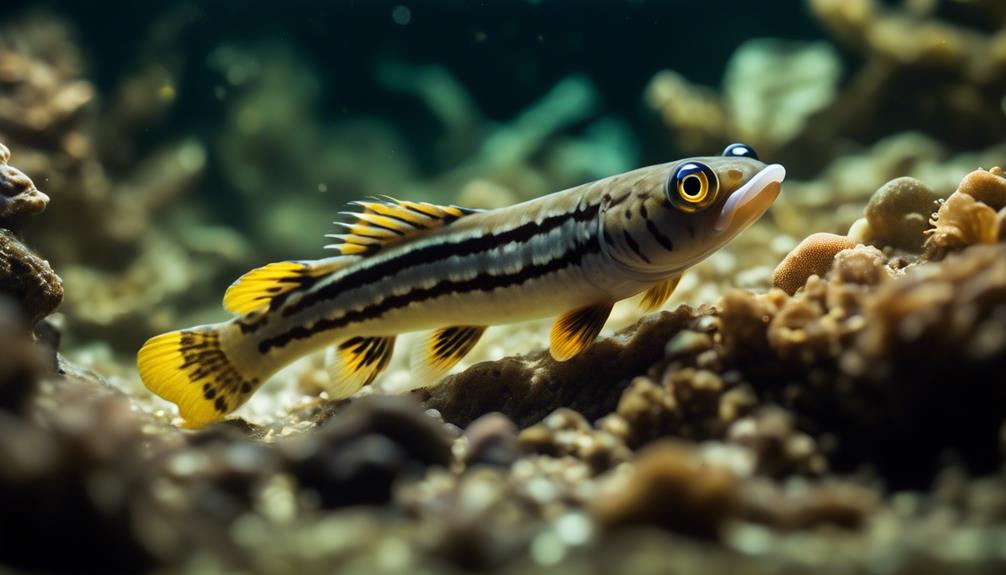
Have you ever wondered about the origins and conservation status of freshwater gobies? These fascinating fish have a unique history and face certain challenges in their survival.
- Most gobies are saltwater or brackish species, but a few have adapted to freshwater habitats.
- Freshwater gobies like the Knight Goby and Bumblebee Goby come from Asian origins.
- They’re commonly found in densely planted environments with plenty of rockwork.
- Freshwater gobies aren’t native to all regions and may require specific conditions to thrive.
- Some species of freshwater gobies are endangered due to habitat loss and pollution.
Understanding the origins and conservation status of freshwater gobies sheds light on the importance of protecting their habitats and ensuring their continued survival. By taking action to preserve their unique environments, we can contribute to the conservation of these colorful and fascinating fish.
Colors and Varieties of Freshwater Gobies
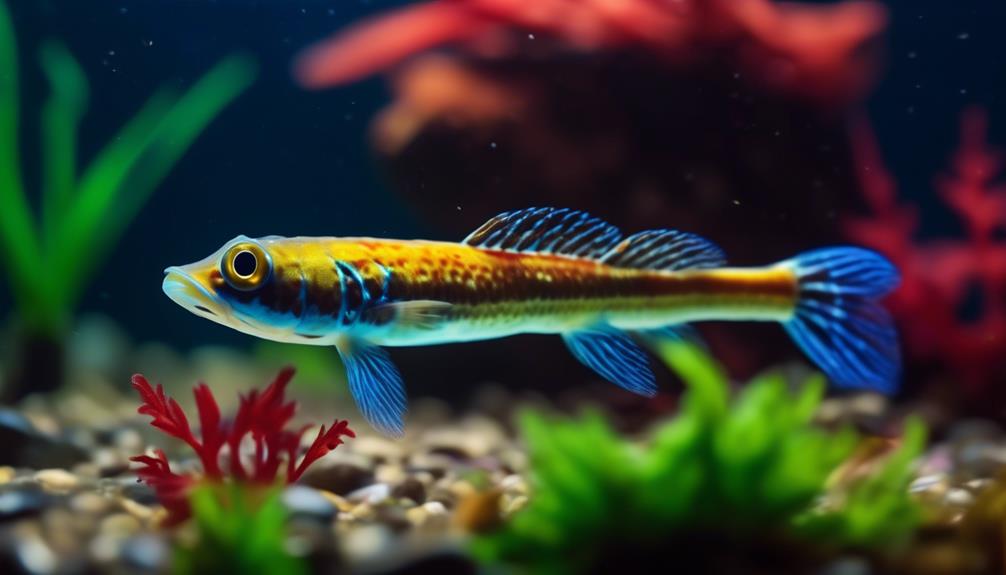
Get ready to dive into the vibrant world of colors and varieties when it comes to freshwater gobies. These small fish may be tiny in size, but they certainly make a big splash with their stunning hues.
From the black and yellow stripes of the Bumblebee Goby to the silver body and black spots of the Knight Goby, each species of freshwater goby has its own unique coloration and pattern.
The Dragon Goby, Cobalt Goby, and Marbled Goby are also popular choices among aquarium enthusiasts, adding even more variety to this already colorful family.
Whether you prefer bold stripes or subtle spots, there’s a freshwater goby out there to suit your taste.
Maintenance and Care of Freshwater Gobies
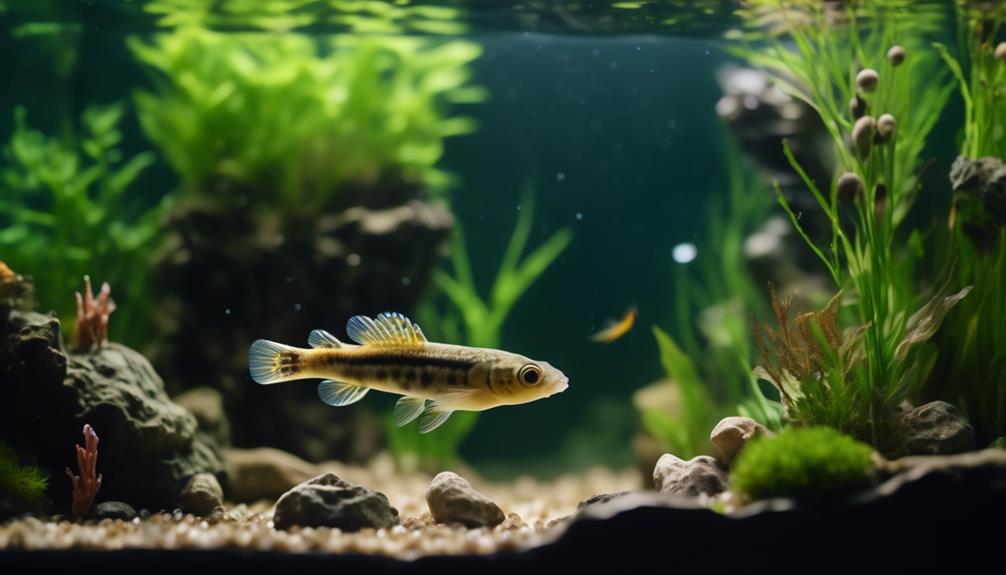
To ensure the health and well-being of your freshwater gobies, it’s important to provide them with proper maintenance and care. Here are some key tips to keep in mind:
- Temperature: Freshwater gobies prefer warm water in the range of 72F to 84F. Make sure to maintain a consistent temperature within this range.
- pH Level: The ideal pH range for freshwater gobies is between 7.5 and 8.5. Regularly test the water and make adjustments if necessary.
- Water Hardness: Gobies thrive in water with a hardness level of 9 to 19 KH. Monitor the hardness and use appropriate treatments if needed.
- Tank Setup: Create a suitable habitat for your gobies by providing a planted tank with rocks and other decorations for hiding. Mimicking their natural environment is important.
- Feeding: Gobies can be fed a variety of foods, including flakes, pellets, insects, and fresh foods. Offer a balanced diet to ensure their nutrition needs are met.
Breeding and Reproduction of Freshwater Gobies
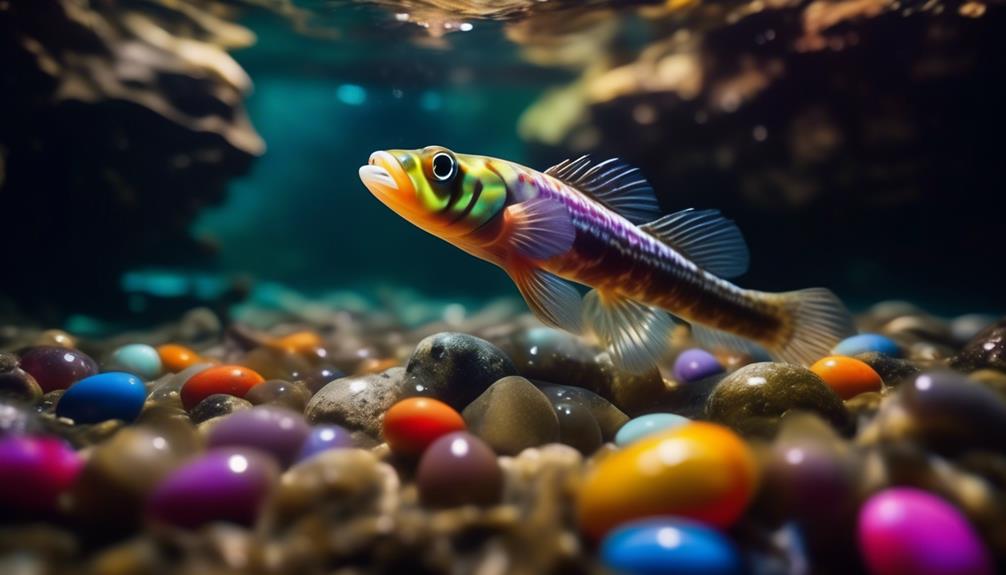
Now let’s dive into the fascinating world of breeding and reproduction of freshwater gobies, an essential aspect of their care that ensures the growth and sustainability of these unique fish.
All freshwater gobies are egg-laying species, with females laying their eggs over rocky areas or substrate. Males then fertilize the eggs and often guard them until hatching, which takes about 4 days.
Breeding behaviors may vary slightly between species.
Breeding freshwater gobies in captivity can be challenging but rewarding. It’s important to provide suitable conditions for breeding, such as the right water parameters and appropriate tank setup.
Creating a conducive environment can increase the chances of successful reproduction and the survival of the offspring.
Habitat Requirements for Freshwater Gobies
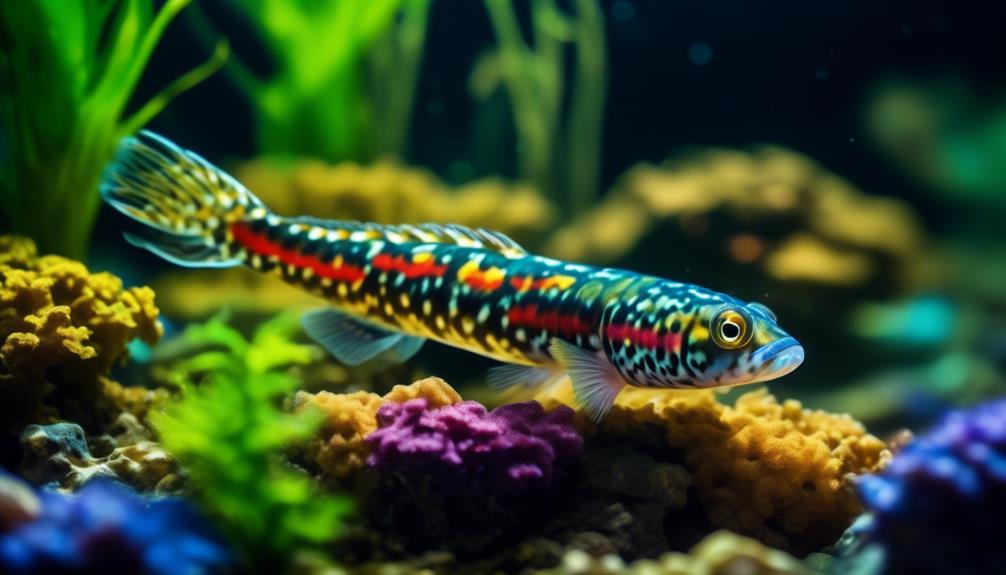
Freshwater gobies have specific habitat requirements that are crucial for their well-being and overall health. To provide the best environment for your freshwater gobies, consider the following:
- Water Temperature: Gobies thrive in warm water, so maintain a temperature range of 72F to 84F.
- pH Level: Keep the water slightly alkaline, with a pH range between 7.5 and 8.5.
- Water Hardness: Gobies prefer moderate hardness, so aim for a range of 9 to 19 KH.
- Aquarium Setup: Create a habitat with plenty of hiding spots by using rocks and decorations.
- Tank Mates: Choose suitable tank mates like gouramis, rainbowfish, livebearers, danios, and catfish to ensure a peaceful community.
Tips for Keeping Freshwater Gobies in Your Aquarium
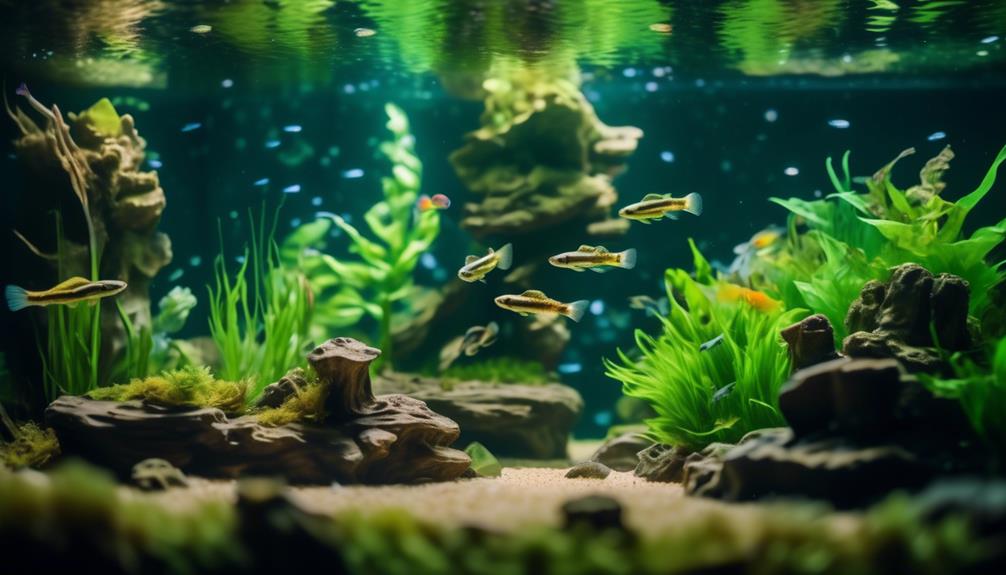
For successful care of freshwater gobies in your aquarium, it’s important to consider a few key tips.
First, make sure to provide your gobies with the right water conditions. They prefer warm water with a temperature range of 72F to 84F and a pH range between 7.5 and 8.5. It’s also important to maintain water hardness in the range of 9 to 19 KH.
Additionally, create a suitable habitat for your gobies by adding plenty of rocks and decorations for hiding. Gobies are known to be jumpers, so make sure to have a securely fitted lid on your tank.
Lastly, provide a varied diet for your gobies, including flakes, pellets, insects, and fresh foods.
Frequently Asked Questions
Can Freshwater Gobies Live in Saltwater or Brackish Environments?
No, freshwater gobies cannot live in saltwater or brackish environments. They have adapted to thrive in freshwater habitats and require specific conditions like warm, slightly alkaline water with moderate hardness to survive.
Do All Species of Freshwater Gobies Have the Same Water Temperature and Ph Requirements?
No, not all species of freshwater gobies have the same water temperature and pH requirements. Different species may have varying preferences for temperature and pH levels in order to thrive in their unique habitats.
How Long Does It Take for Freshwater Gobies to Reach Their Full Adult Size?
Freshwater gobies can take several months to a year to reach their full adult size, depending on the species. It’s important to provide them with proper care, including suitable tank conditions and a balanced diet, to ensure their healthy growth.
Are There Any Specific Diseases or Health Issues That Freshwater Gobies Are Prone To?
Freshwater gobies are generally hardy and resistant to diseases, but they can still be prone to common fish diseases like ich and fin rot. Regular water changes and a clean tank environment can help prevent these issues.
What Is the Average Lifespan of a Freshwater Goby in Captivity?
The average lifespan of a freshwater goby in captivity can vary depending on the specific species and care provided. With proper tank conditions and nutrition, gobies can live anywhere from 2 to 5 years.
What Unique Habitats Do Colorful Gobies Thrive In?
Colorful nature’s rainbow fish, also known as gobies, thrive in a variety of unique habitats. These vibrant and colorful fish can be found in coral reefs, rocky shorelines, and even in mangrove forests. Their ability to adapt to different environments makes them an essential part of the underwater ecosystem.
Conclusion
So, if you’re looking to add a splash of color to your aquarium, freshwater gobies are the perfect choice. With their vibrant hues and unique adaptations, these enchanting fish bring life and beauty to any tank.
By providing them with the right care and habitat, you can enjoy the mesmerizing patterns and behaviors of these captivating creatures.
So, dive into the world of colorful freshwater gobies and create a stunning aquatic display in your own home.

